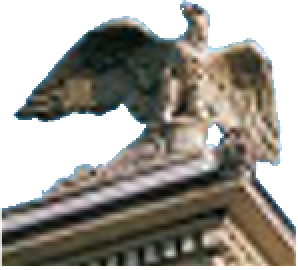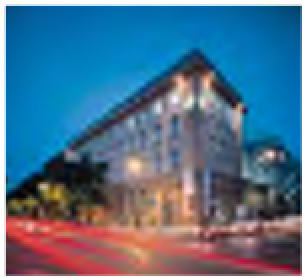Travel Reference
In-Depth Information
Brandenburger Tor
Berlin's best-known landmark
on Pariser Platz leads through to
Unter den Linden
(see pp8-9).
d
Pariser Platz
•
Map K3
Deutsche Guggenheim
This branch of the American
Guggenheim museum, together
with the Deutsche Bank branch
Unter den Linden, show chang-
ing exhibitions of modern art of
the highest standard from the
US. During recent years, Deut-
sche Guggenheim has thus man-
aged to become one of the most
successful and popular art ven-
ues in the city, with an emphasis
placed on installations. In 1999,
the retrospective of works by
Dan Flavin was a particular
highlight. Treasures from the
Deutsche Bank archives are also
shown here. Pop into the small
museum shop and refresh your-
self with a coffee from the
museum café.
d
Unter den Linden
13-15
•
Map K4
•
11am-8pm Tue-Thu,
11am-10pm Wed
•
(030) 202 09 30
•
Admission charge, free on Mon
Altes Palais at Forum Fridericianum
area around today's Bebelplatz,
and personally influenced their
design: Deutsche Staatsoper, the
first free-standing opera house
in Europe; Catholic St Hedwigs-
kathedrale, Alte Bibliothek and
Prinz-Heinrich-Palais, later the
Humboldt University. Bebelplatz
itself is particularly interesting.
A memorial set into the ground
reminds of its dark past - in
1933, it was the venue for the
Nazi book burning. Frederick's
successors commissioned Altes
Palais and a memorial statue of
“the old Fritz , surrounded by
“his” buildings. Christian Daniel
Rauch created the 13.5-m (44-ft)
high equestrian bronze figure in
1840. It portrays Frederick the
Great wearing his trademark tri-
corn hat and coronation mantle
and carrying a walking stick. The
statue has always turned its back
to the east - but wags claim that
the East German government
mistakenly set up the figure the
wrong way around.
d
Unter den Linden and Bebelplatz
•
Map K4
Forum Fridericianum
The historic structures of
this architectural complex in
Unter den Linden are among the
finest attractions in Berlin. From
1740, Frederick the Great com-
missioned the prestigious Early-
Neo-Classical buildings for the
Frederick as Architect
Forum Fridericianum was not
only Frederick the Great's
memorial to himself, it also
ensured that Unter den Linden
became one of the greatest
boulevards in Europe. The king,
who favoured a strict Neo-
Classical style, drew up the plans
for the Staatsoper and other
buildings himself, and
Knobelsdorff executed his ideas.
Deutsche Guggenheim, Unter den Linden
For more on Unter den Linden
see pp12-15
11 3










